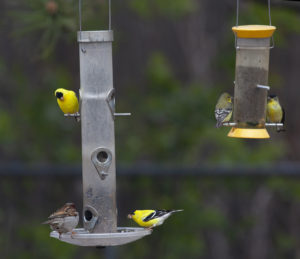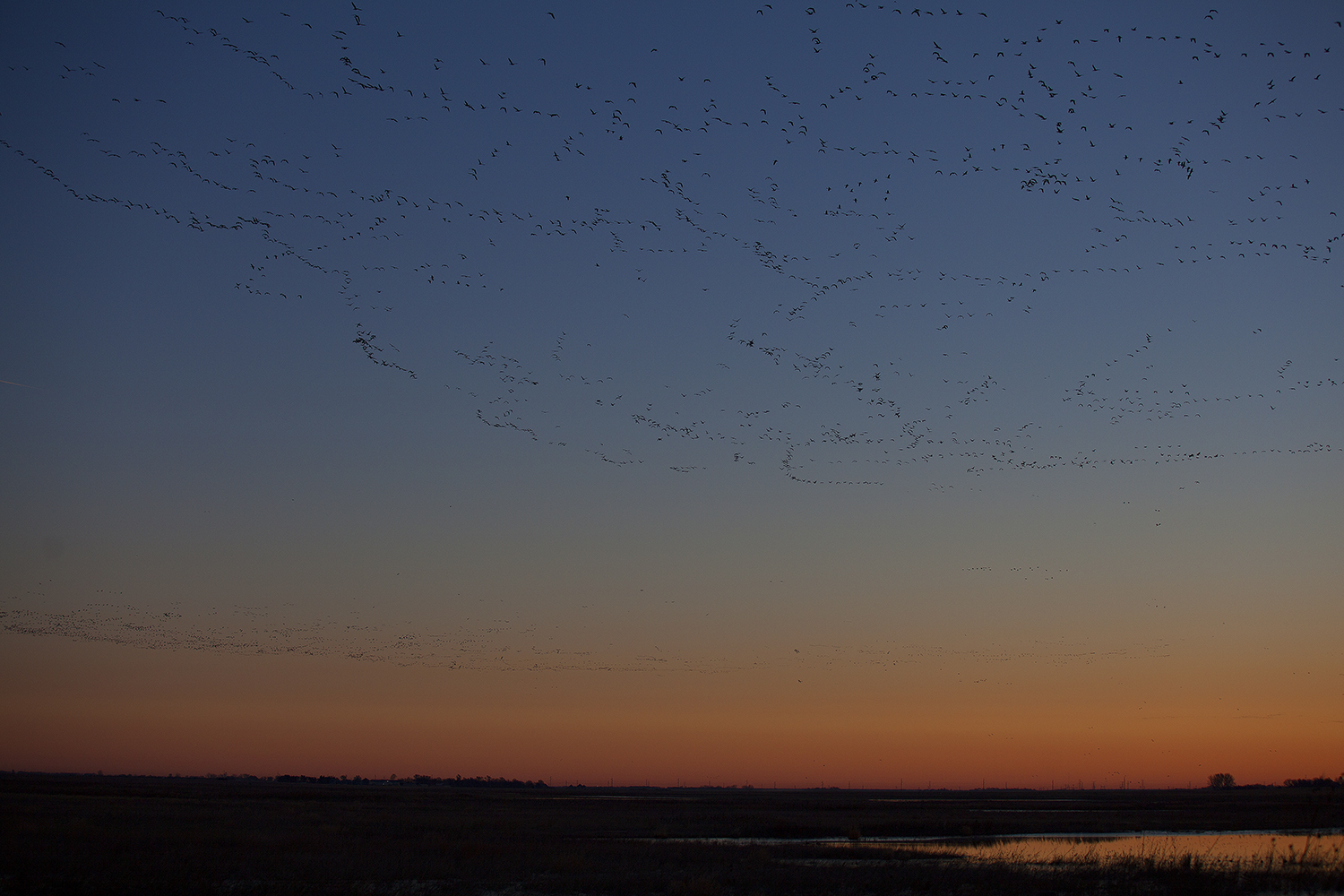THE WIND PAUSED FOR TEN MINUTES OR SO— AN UNUSUAL PHENOMENON ON THE HIGH PLAINS— WAVERED, THEN swung into the north. We’d enjoyed three days of spring, but at the foot of the Rockies in the first week of May, spring is an ephemeral condition. As the sun set, a spattering of rain and those little ice balls the weathermen call graupel rattled at the windows as the temperature dropped. The sound alone was enough to send a shiver down the spine. The Lady of the House and I scuttled gratefully under the down comforter, thankful for shelter on such a night.
Sometime before dawn, the big blue spruce outside the window sighed one last time and grew still. As the light came up, I could tell there was a heavy overcast, but, overcast and chill notwithstanding, Freya the Brittany insisted on her morning run. After I’d put on my tall boots against the wet grass in the field and added a wind shell to my fleece, we stepped out into the gray morning, Freya shouldering her way into the weeds as a cloud of small birds rose in front of her, hundreds of them rolling out of her way to disappear in the vegetation ahead, their call notes like electric sparks.

Three American goldfinches and a lesser goldfinch on feeders in May. Photo copyright 2018 by Chris Madson, all rights reserved.
The light was flat, and I hadn’t brought a binocular. I strained to pick out some signs of color and field marks. They were mostly sparrows: lark, chipping, white-crowned, clay-colored, vesper with a few horned larks, a goldfinch or two, and a scattering of what may have been siskins. One larger specimen perched on a fencepost to get a better look at me— a Say’s phoebe. As the dog and I continued across several hundred acres of open ground, the cover swarmed with this sudden invasion. “How many?” I wondered. No way of telling. An immense, unfathomable number.
As we turned for home, a larger shape streaked through a shelterbelt and swept close overhead— a sharp-shinned hawk with something small and feathered in one talon, the cheetah following the herd of wildebeest, feeding at will on the assembled throng.
It was a wave of the spring migration, broken for a day or two against the arctic front to settle in these empty fields. Ordinarily, these small migrants travel at night, navigating by the stars and the tiny electrical flux they generate as they cleave the magnetic field of the earth, landing at dawn and using the daylight to feed and rest for the next big push. When they found themselves bucking a fierce headwind, they dropped out of the sky into these neglected open places at the edge of town, guided by an instinctive aversion to burning energy needlessly. Freya and I were the only earthbound residents to mark their arrival.
As I watched the loose flocks rolling through the cover ahead of us, I wondered how many other waves had passed me by— unseen, unfelt. Insulated by cocoons of our own making, we miss all but the most overwhelming changes of the seasons. We’re moderately aware of the shift in weather; we may stop and listen to a chevron of geese on its way to nurseries beyond the reach of our imagination, but, mostly we’re simply unaware of the ebb and flow of living things that sweep over us. The tides of life.
It is this estrangement, I think, as much as our insatiable appetite for everything the planet offers, that has caused such harm. The populations of nearly every species I saw that morning have been declining for at least as long as counts have been made. Entire landscapes have been transformed, degraded, stripped of their native vegetation, restocked with alien pests of all sizes, descriptions, and capacity for mischief. If it’s true that we cannot love what we do not know, then it may be that we have set the stage for a massive pogrom. There may be no more evil act than to kill with indifference.
These are the thoughts the hard numbers inevitably bring. But, setting the data aside, there is a certain hope that comes with the wave. For all the difficulties they face, the birds still return, often in flocks so overwhelming they appear on radar and fill the fields we have left with bustle and cheer, vast waves sweeping up and down the continent, following traditions as old as life itself. As delicate as they seem, they are survivors, far travelers— tough, resilient, but ultimately dependent on the health of the land that supports them. Their future is ours.
I wonder when we’ll summon the wisdom to recognize that.
The wind stayed in the north all that day and most of the night. Sometime in the wee hours, it swung into the southwest and then the south. The next morning, Freya and I watched the sun rise in a flawless sky as we headed for the fields once again. The meadowlarks were in fine form, embroidering the morning with song. But the wave of migrants had gone, headed north again in the night.
Bringing another spring.
—————

Leave a Reply
You must be logged in to post a comment.